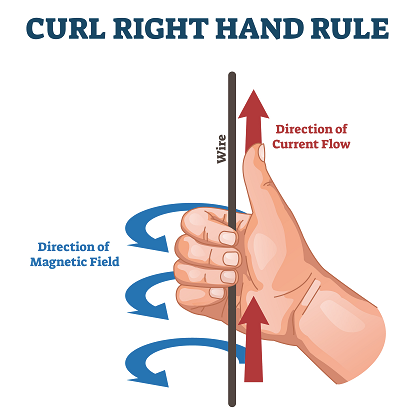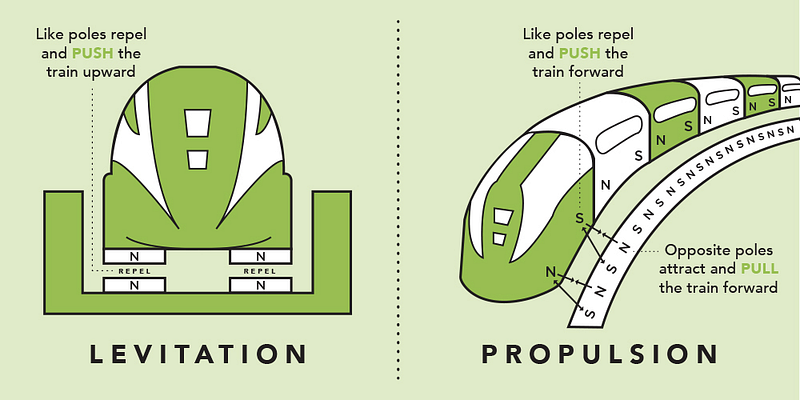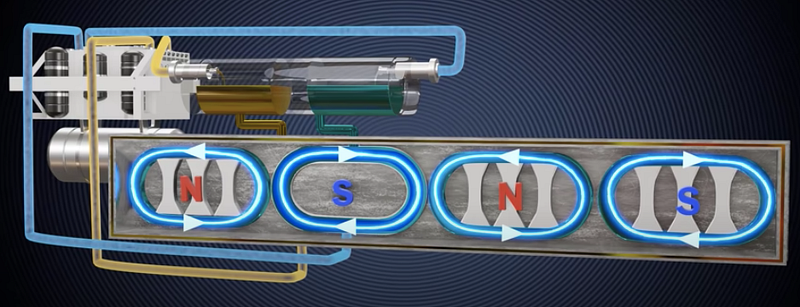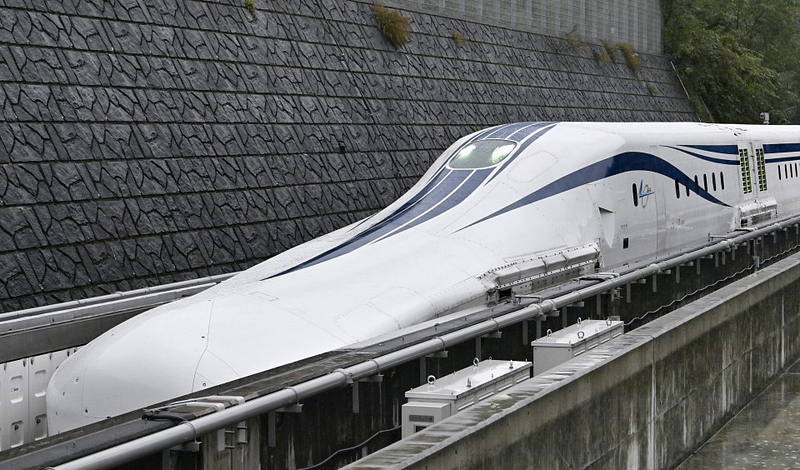Electromagnetism Has Changed Trains
Everything on this earth that has mass, including us, is considered matter. Matter consists of molecules, which consist of atoms, which…
Everything on this earth that has mass, including us, is considered matter. Matter consists of molecules, which consist of atoms, which consist of static protons (positive electric charge), static neutrons (neutral electric charge) and mobile electrons (negative electric charge). In an atom, protons and neutrons group together to form the nucleus, while the electrons move around the nucleus.
Introduction to electricity and magnetism
Electricity comes in two forms, static (at rest) and dynamic (with movement). Have you ever felt a shock when your skin is in contact with something else, like a metal door handle or another person’s skin? That is static electricity. It occurs due to the fact that when we are in contact with something (or someone) else, electrons from one of the objects, due to their ability to move, jump to the other, which results with one object being more positively charged and one more negatively charged. The opposite charges between the objects cause static electricity. Dynamic electricity on the other hand, refers to flow of charges between two points through a conductor like a metal wire. You can read more about the basics of electricity here.
Magnetism works about the same way as electricity, where opposite charges cause attraction, only magnetism must have the electric charges in motion, which means a magnetic field can only be produced when there is electricity or current. For example, there is attraction between mobile electrons and the protons in the nucleus of an atom, that is magnetism at an atomic level. So we can actually say that every object has its own magnetic and electric field, but the strength differs in every object.
The rate of flow of charges is actually what we call current. When current flows through a wire, charges are moving, so a magnetic field is produced around the wire. Hence, the term “electromagnet” was introduced, which means a magnet formed by current. The direction of the magnetic field in a current carrying wire is determined using the right hand grip rule.
The flow of current is not always smooth, there is something that opposes this flow and is called resistance. Resistance is measurable, and its amount differs according to factors like temperature, the length of the conductor, the cross-sectional area of the conductor and the nature of the conductor itself, like the resistivity of the material. This can be mathematically inferred by the following formula for resistance (R) .
As previously mentioned, all objects can conduct electricity, but not all are considered good conductors of electricity. Silver and Copper are good conductors due to their low resistivity (which is why most wires are mainly made of copper). Rubber, on the other hand, is a bad conductor. The case is similar for magnetism, some materials have very weak magnetism, and some are so strong, current is not even required to form a magnet, and such materials are called permanent magnets.
Superconductivity
Although temperature is not in the formula to obtain resistance, it is directly proportional to resistance. That means the lower the temperature is, the lower the resistance. Some materials can have 0 resistance when it is at a temperature below the critical temperature. The phenomenon is known as superconductivity, which was first observed in 1911 by Dutch physicist, Heike Kamerligh Onnes and his team when they discovered that the electrical resistance of mercury becomes 0 below -269°C, which is known as the critical temperature. Since there is no resistance, once current flows in a superconductor, it flows forever.
Ever since then, the field of superconductivity has been further studied. In 1933 Germany, two physicists, Walther Meissner and Robert Ochsenfeld, conducted an experiment. Samples of tin and lead were prepared and placed inside an applied magnetic field (by putting them on a permanent magnet disk).They measured the external magnetic field distribution of the tin and lead samples before and after cooling them below their critical temperatures.
Remember that I mentioned that every object has a magnetic field due to mobile electrons in atoms? That is the internal magnetic field, which is a magnetic field that exists naturally within the object. The two physicists noticed that after cooling the samples, the internal magnetic fields of those samples were expelled, and this caused the samples to levitate. Hence, the phenomenon was named Meissner–Ochsenfeld effect, after the scientists who made the discovery. The discovery of the Meissner-Ochsenfeld effect led to the introduction of magnetic levitation technology.
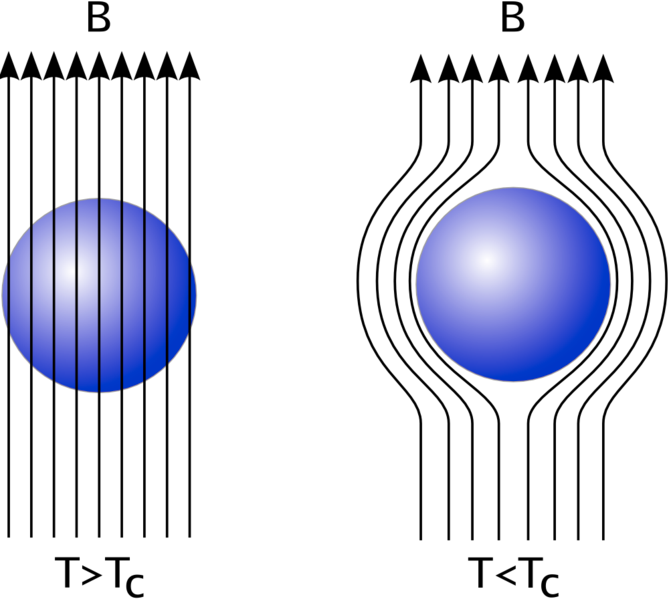
Maglev Trains: The Future of High Speed Transportation
Magnetic levitation (also known as maglev) goes against gravity. It allows objects to have no contact with the ground, hence there is no friction between objects and the ground. The most famous application of magnetic levitation would be in the transportation field. American scientists Robert Goddard and Emile Bachelet first came up with the idea of frictionless trains via maglev more than 100 years ago.
As we’ve learnt in elementary school science, magnets with like poles repel (eg. north-north will repel) and opposite poles attract (eg. south-north will attract). There are many possible designs of maglev trains, but generally, the whole train will be levitated from the rails via magnetic repulsion. Then, it moves by attraction and repulsion between the magnets under the train and the wire coils in the side walls with current flowing in them (as previously stated, a magnet can be formed when there is current flowing, called electromagnets). Some maglev trains are equipped with superconducting magnets to increase the overall strength of repulsion and attraction, so coolants are used to maintain the superconducting state.
In China, a maglev train has been up and running since 2004, connecting Shanghai Pudong International Airport and Longyang Road Station. It only takes 8 minutes to travel between the two stations, which is 30 km away. In Q4 of 2022, China introduced yet another maglev train that is currently being tested, this time fully designed and built locally. With a top speed of 1030km/hr, it travels so fast, it will be known as the electromagnetic sled.
Japan, well known for its technological advancement, is constructing a maglev train that links Tokyo and Nagoya, with plans of extending the line to Osaka as well. It will be named Chuo Shinkansen (also known as SCMaglev), after the infamous high speed bullet train, Shinkansen. It is predicted that the line between Tokyo and Nagoya will commence operation by 2027, with the extension to Osaka by 2037. Unlike other maglev trains, Chuo Shinkansen’s design is unique. The main wow factor is, it uses superconducting electromagnets that are fitted on both sides of the train body.
According to a lecture by Nidec’s Technical Adviser Takashi Kenjo, niobium-titanium alloy is chosen as the superconducting wire and liquid helium as the coolant. The wires are protected by a radiation shield to prevent them from absorbing surrounding heat. Since the wires are superconducting, they only need to be charged once, and current will permanently flow in them. 4 of such wires are constructed in one electromagnet, with the currents flowing in opposite directions (as indicated by the white arrow) to form the North and South poles.
The side walls are equipped with normal electromagnetic coils. Force produced due to the polarity of the coils and the superconducting electromagnets will propel the train. Like poles will push the train due to repulsion, while opposite poles will pull the train due to attraction, causing the train to move forward.
I would say the mechanism behind Chuo Shinkansen’s levitation would be the most mind blowing. Besides the electromagnetic coils, the side walls are equipped with figure-8 coils with no current flowing. Basically, it applies a theory in Physics, known as Faraday’s Law. Due to the superconducting electromagnet being positioned low (almost parallel to the bottom part of the figure “8” of the coil) it produces a net induced current and upward force which levitates the train. To understand the physics behind this train at a deeper level, you can watch this video.
Are Maglev Trains Actually Better?
How are such trains superior to the regular trains that travel on wheels? Due to being frictionless, these trains can travel much, much faster, so this overall increases time efficiency. Also because they are technically floating, there’s no more of that “clickety clack” sound coming from the wheels, so this reduces sound pollution. Cost is where maglev trains lose, it is more expensive to build as it requires rare earth materials and electromagnets. also needs to stay cool using expensive substances like liquid helium or nitrogen in bulk. The body needs to be constructed such that air resistance would not cause damage to it, which drives the cost up even further. According to a video by Youtuber Nathan Nagele, the cost of maglev trains per mile can go up to 200 million dollars, compared to 82 million for high speed and 2.5 million for traditional trains.
In my opinion, the cost outweighs the benefits. In Germany, a maglev train was seen abandoned, which proves that to a certain point, humanity is not exactly ready for this sort of advancement yet. Maybe, in the future, maglev trains will be a more feasible project, given the excess to such technology is not as limited and initiatives are taken to lower the cost, such as using sustainable ways to mine rare earth materials.
[Written by: Amirul Haziq bin Amri. Edited by: Teoh Jin]



